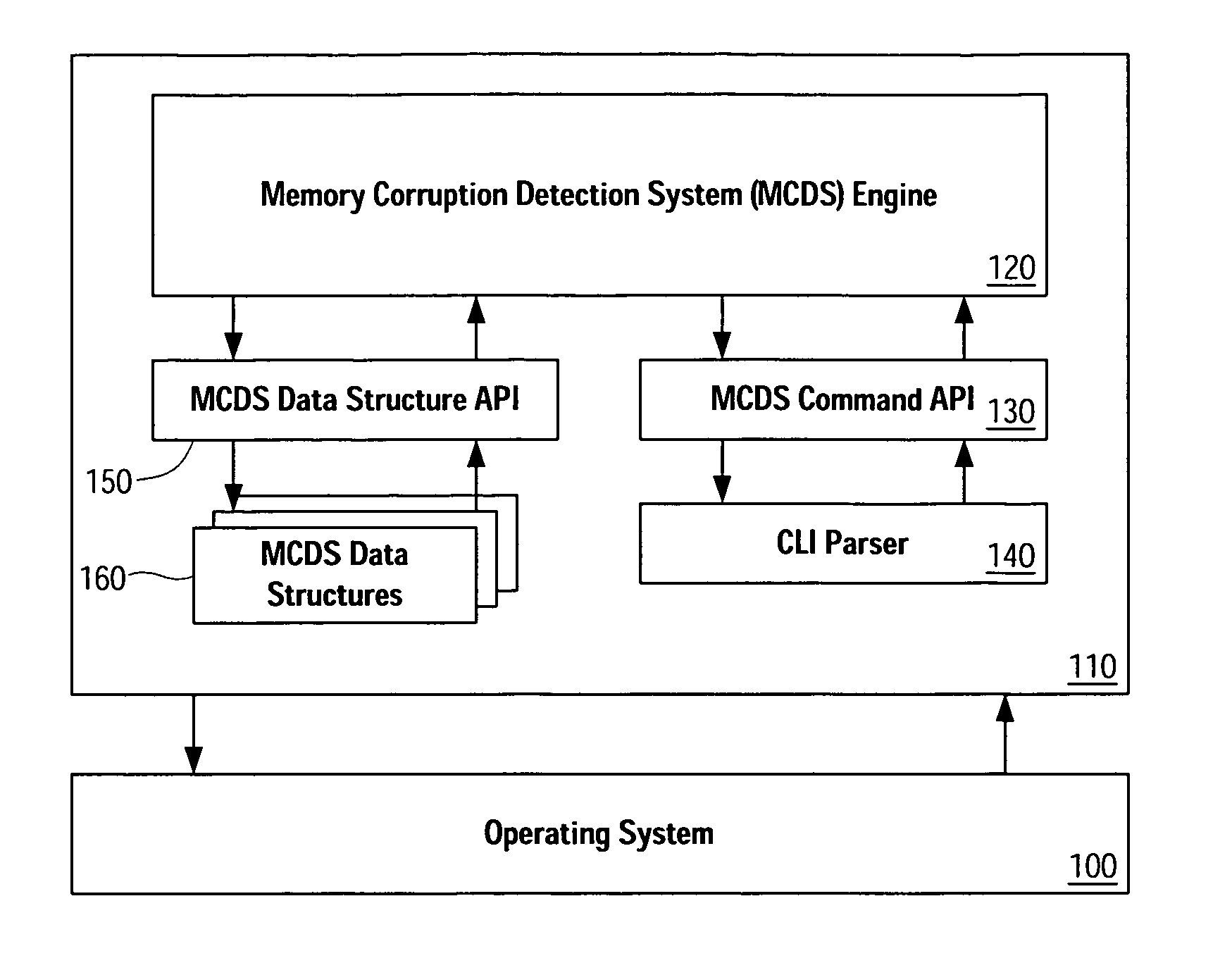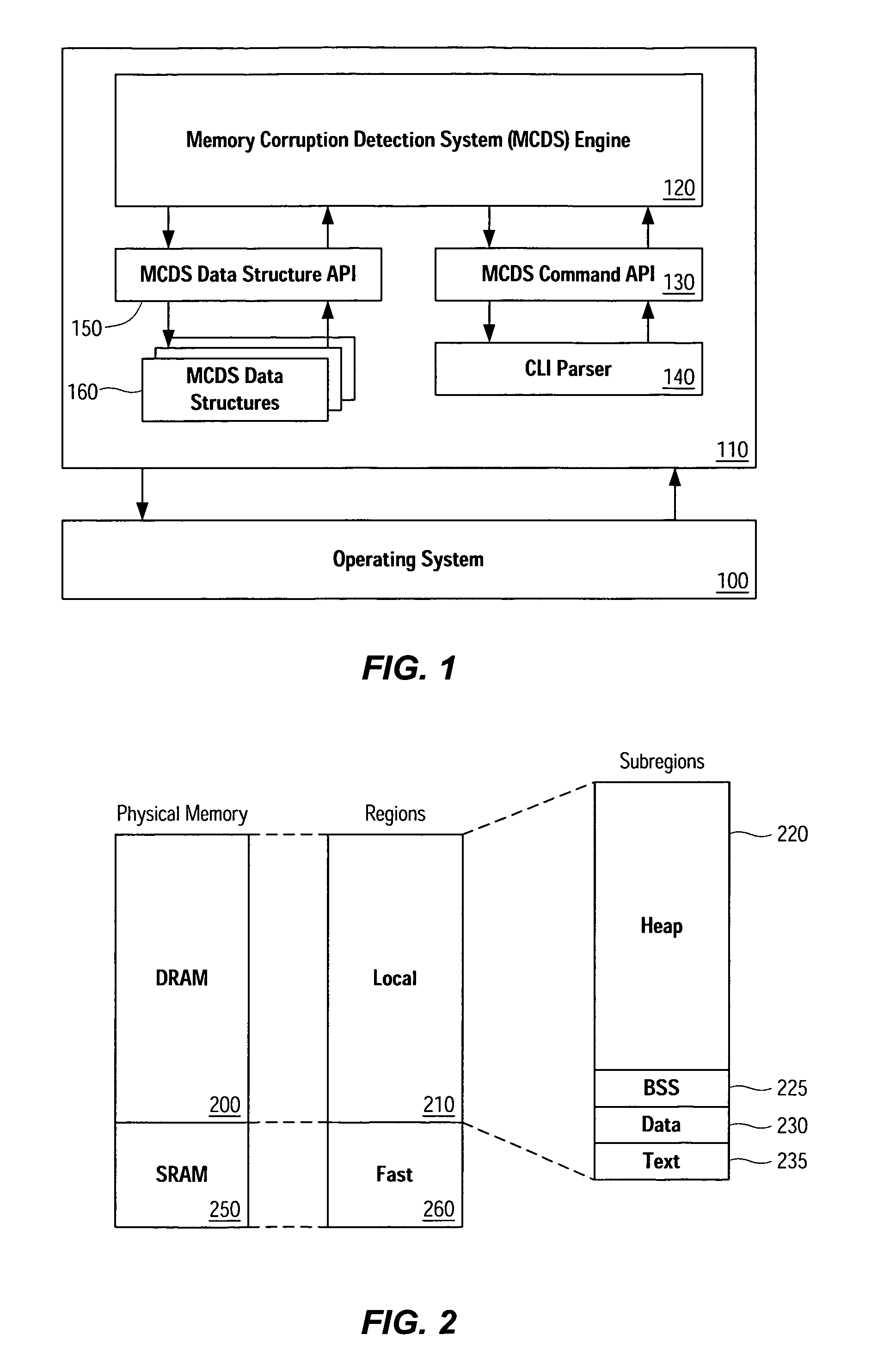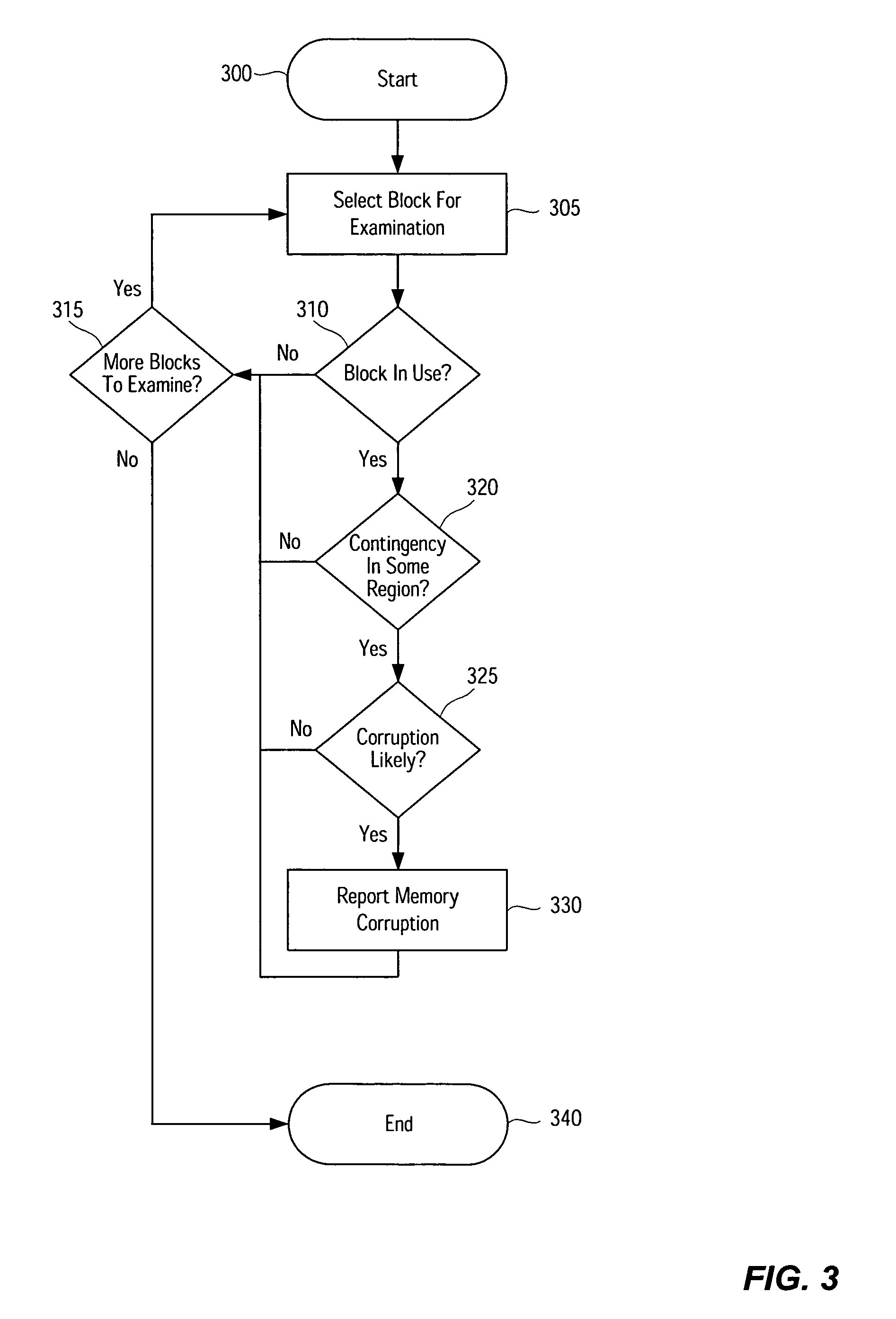Memory corruption detection system and method using contingency analysis regulation
a contingency analysis and memory corruption technology, applied in error detection/correction, instruments, computing, etc., can solve the problems of many system malfunctions, inability to predict in general advance how much memory to allocate, and complex nature of memory allocation errors
- Summary
- Abstract
- Description
- Claims
- Application Information
AI Technical Summary
Benefits of technology
Problems solved by technology
Method used
Image
Examples
Embodiment Construction
The following sets forth a detailed description of at least the best contemplated mode for carrying out the one or more devices and / or processes described herein. The description is intended to be illustrative and should not be taken to be limiting.
Although there are a number of techniques for identifying potential instances of memory corruption, existing memory corruption detection algorithms do not adequately satisfy address the problems identified above. In order to both improve memory corruption detection systems, both directly by improving the algorithms and indirectly by improving the manner in which the algorithms are adjusted or “fine-tuned”, certain neuroscience concepts and principles have been applied to memory corruption detection. In particular, the present application takes advantage of concepts described by Michael Kahana in “Contingency Analyses of Memory,” pp. 59-72, The Oxford Handbook of Memory, Oxford University Press, 2000, which is hereby incorporated herein by...
PUM
 Login to View More
Login to View More Abstract
Description
Claims
Application Information
 Login to View More
Login to View More - R&D
- Intellectual Property
- Life Sciences
- Materials
- Tech Scout
- Unparalleled Data Quality
- Higher Quality Content
- 60% Fewer Hallucinations
Browse by: Latest US Patents, China's latest patents, Technical Efficacy Thesaurus, Application Domain, Technology Topic, Popular Technical Reports.
© 2025 PatSnap. All rights reserved.Legal|Privacy policy|Modern Slavery Act Transparency Statement|Sitemap|About US| Contact US: help@patsnap.com



